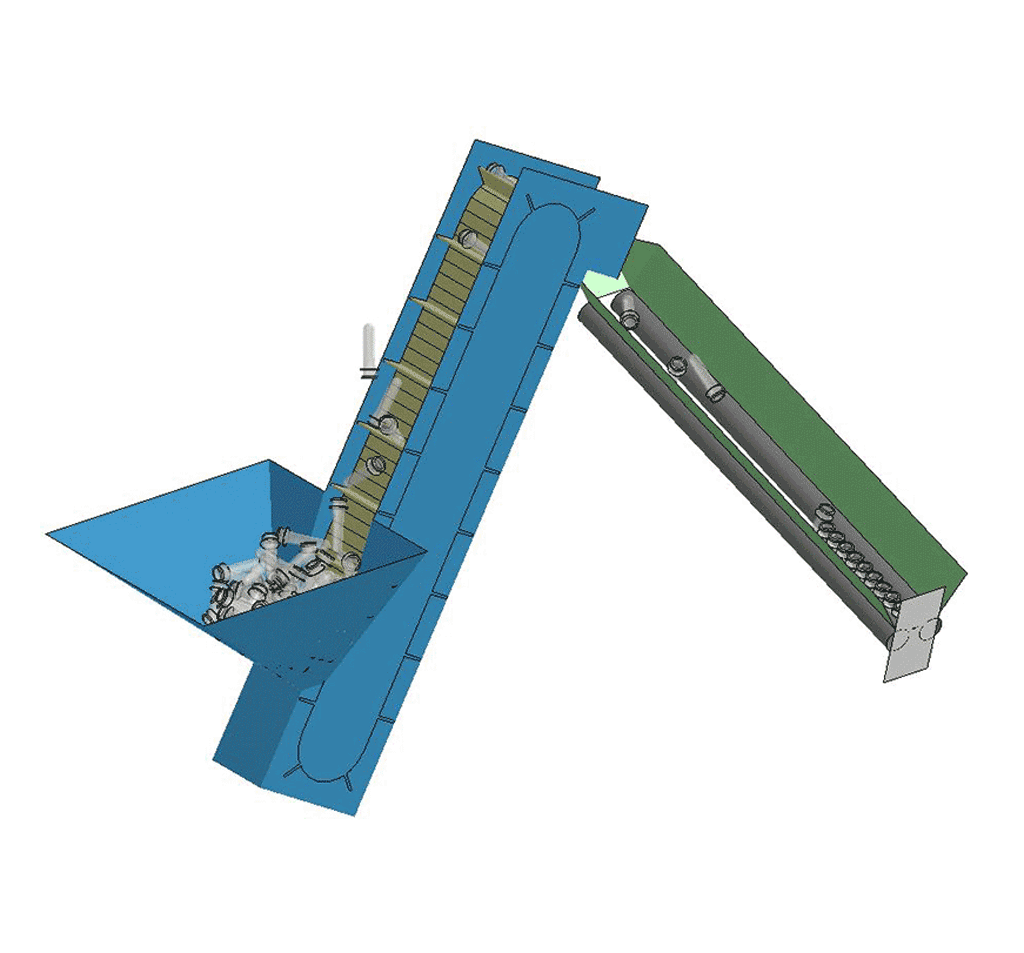Virtual Manufacturing is the utilization of three-dimensional geometric models and advanced software tools to simulate manufacturing and conveying to design, test and optimize production processes. Most often computer-aided design (CAD) data is utilized to create the geometric models used in the simulations. Equipment modifications, while costly and time-consuming to implement physically, can be quickly modeled and explored to develop efficient and streamlined manufacturing lines.
In addition to modeling manufacturing processes, Virtual Reality (VR) can be used to place users into accurate virtual production environments, even if the actual facility is located thousands of miles away. These VR environments are detailed and true-to-scale, allowing for facility tours by management and the design, safety and training teams even before any machinery is placed.
ISBM Preform Hopper Transfer Operation Simulation
This virtual manufacturing analysis studied a hopper transfer operation for Injection Stretch Blow Molding (ISBM) preforms for packaging. The LS-DYNA solver was used along with a Kinetic Vision proprietary toolset to test and validate many preform geometry designs as well as optimization of industrial process parameters such as conveyor speed, belt designs, rail spacing, and operating angles.
Simulations that were done in days replaced what would have been several months of prototype design and test iterations, allowing the manufactured product to reach the marketplace much faster and at a lower cost.

Bulk Material Handling Simulation
Often the performance of a processing plant can be hinged on the efficiency of the bulk material conveying systems supplying the plant. The Kinetic Vision virtual manufacturing team utilizes Discrete Element Method (DEM) and Smoothed Particle Hydrodynamic (SPH) simulations in LS-DYNA and ABAQUS to optimize processing performance.
Through analysis of particle flow, particle-to-structure interaction, and particle-to-particle interaction, equipment operating parameters and performance can be determined prior to expensive manufacturing and prototyping.
This short animation shows the results of a virtual manufacturing simulation utilized to optimize the performance of a bulk material handling system.


